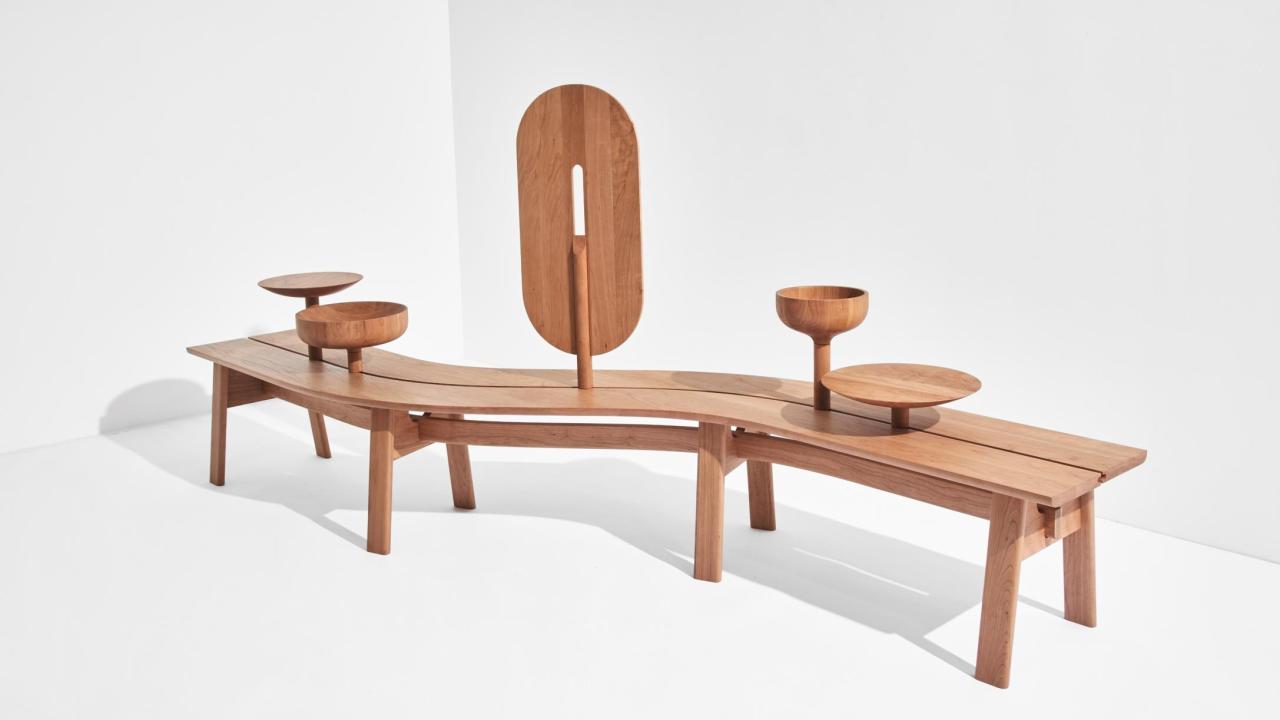
Technical Matters #9: Underutilized American hardwood species
In this Technical Matters feature, I’m going to talk about underutilized American hardwood species. In the vast temperate hardwood forests of North America, there are 20 plus different hardwood species that are commercially available, all with different characteristics in terms of figure, colour, and texture. Each individual species can also vary from one growing region to another, depending on climate, soil and altitude, as well as forest management. These variations offer the designer, architect and furniture maker a wide choice of material to choose from.
In recent years in Europe, Australia and South Africa, architects and designers have tended to favour American white oak for furniture and flooring, as it is seen as a solid ‘tried and tested’ species for these applications. More now than ever before, additional pressure is being put on this species from the surge in demand from the wine and whisky industries for barrel staves. Therefore, now must be the right time to consider some underutilized species as alternatives.
I will focus on four species which the American Hardwood Export Council has championed in its recent global design initiatives; Connected, Discovered, and REIMAGINE. These are cherry, red oak, and both hard and soft maple.
American Cherry (Prunus serotina)
The heartwood of American cherry is a rich warm reddish-brown color, which will tend to darken slightly as it ages. The timber has a very fine texture and tight figure, which means it machines and finishes exceptionally well. Within the figure of the timber are small natural characteristics in the form of pin knots and gum flecks, which add to the decorative nature of the timber.
For many years cherry was popular in the furniture industry, particularly for cabinetmaking. Recently, it has fallen out of fashion, so now it is time to rediscover this beautiful timber. The timber can be used for paneling and veneers and is often used in auditoriums and concert halls because of its excellent acoustic properties.
Cherry accounts for around 3 percent of the American hardwood growing stock and it can predominantly be found in the states of Pennsylvania, Virginia and West Virginia. Although it accounts for are relatively small percentage of the forest, cherry trees take quite a short time to reach maturity, at around 60 years, and there is more growing than is being harvested.
Red Oak (Quercus spp. , principally Quercus rubra)
American red oak is by far the most abundant species to be found in the American hardwood forest. There are numerous subspecies and together they account for almost 20 percent of the growing stock and can be found right across the eastern United States.
Contrary to its name, the wood itself is not actually red! The wood can have a pinkish tinge which can get more pronounced the further south down the Appalachians you go. The name is actually derived from the color of the leaves of the trees in the autumn.
Red oak is more popular in the Middle East and Asia than it is in Europe, where it is often seen as inferior to white oak-something that is totally unjustified. In fact, red oak has advantages over white oak, with similar, if not better, working properties, while its open, porous grain texture allows it to take stains and finishes extremely well.
The wood has a coarse, tactile texture and when soaked, water can travel through the timber, softening it and making it good for steam bending. It is widely available from sawmills in North America and the lumber (sawn timber) comes in a wide range of sizes and specifications.
Hard Maple (Acer saccharum, Acer nigrum)
Although hard maple can grow in mixed hardwood forests throughout the United States, the species prefers the colder climate of the northern USA. The short growing season means that the timber produced has a fine figure and texture. The white-colored sapwood is world-renowned for its delicate color and finishing quality.
As the name suggests, the wood is very hard, and it is the choice of timber for sports hall floors and other high-traffic areas. It can be stained to look like other species if necessary and can be used to make high-class furniture and kitchenware. Maple is very straight-grained, but it can occur as ‘curly’ or ‘birds eye’ maple, which are highly prized, especially as veneers.
A bit like cherry, maple has fallen out of fashion with designers and furniture makers in recent years, so perhaps it is now time for a comeback. The trees also produce the world-famous maple syrup too!
Soft Maple (Acer rubrum, Acer saccharinum & Acer macrophyllum)
Unlike hard maple, which prefers the colder northern climate, soft maple trees grow everywhere across the American hardwood forest, meaning that there is more variance in wood properties, depending on provenance. ‘Soft’ is misleading as both hard and soft maple are quite hard and heavy, although soft maple is slightly less hard and not as strong.
The color of the wood is generally darker than hard maple. The sapwood has pith flecks as a natural characteristic. The wood of soft maple is generally straight-grained with a fine texture and with a figure similar to American cherry. It can even be stained as a cherry substitute. All maple species make up around 15 percent of the American hardwood forest.
